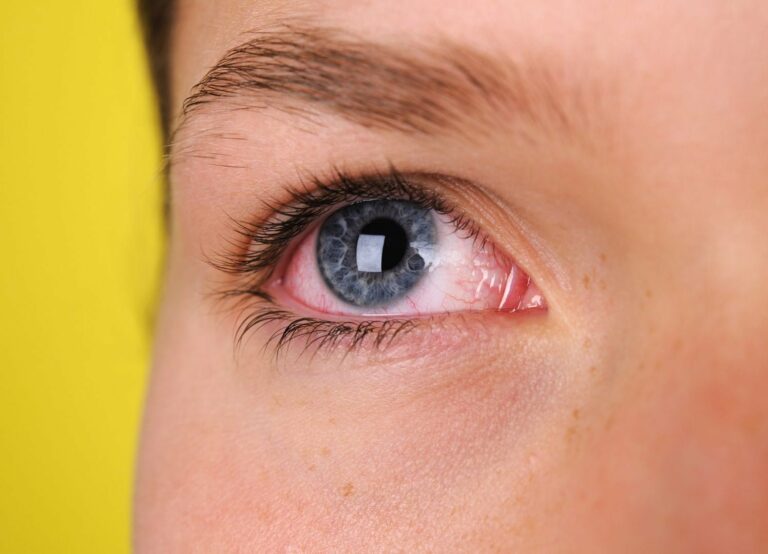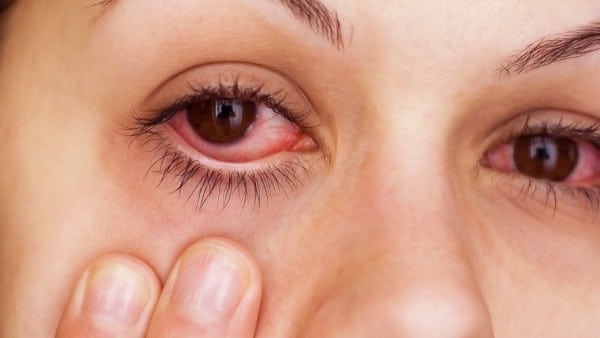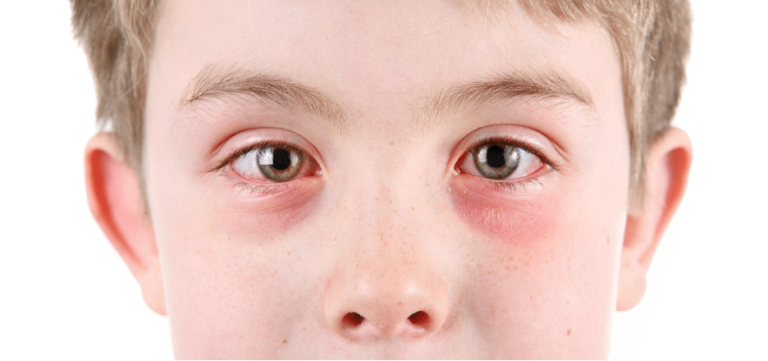Treatment of retinal diseases and surgery | Treatment of dryness, redness and inflammation of the eye
Treatment of retinal diseases and surgery | Treatment of dryness, redness and inflammation of the eye
In fact, ophthalmologists are usually the first to detect chronic diseases such as pressure, diabetes, thyroid disorders, etc. during eye exams. Believing in the need to spread awareness of the treatment of retinal diseases and surgery and promote education, prevention of eye diseases and treatment of the retina, we strive to provide reliable information on the basics of eye treatment.
Eye treatment has advanced a lot, and due to the sensitivity of the eye, a careful diagnosis and examination should be made when eye pain occurs to determine the cause of the defect and appropriate treatment. However, a correct diagnosis is not always easy.

Dry eyes, red eyes, and inflammation of the eyes are symptoms that start small, but with neglect, they become annoying and painful and lead to serious complications and more severe diseases and may affect vision. That is why our doctors at Batal Specialist Complex always advise to consult a doctor to prescribe the appropriate eye treatment for each case.
Retinal detachment is a serious eye condition in which the retina stops receiving oxygen, and the symptoms of retinal detachment can be frightening.
Objects may appear to float above your eye, or a gray veil may move across your field of vision. If not treated quickly, retinal detachment can cause vision loss.
Retinal detachment repair is a surgical procedure used to restore blood circulation to the retina and preserve vision. If you have the symptoms described above, you should contact your ophthalmologist or go to the emergency department immediately
The retina is the part of your eye that sends images through the optic nerve to the brain. The retina contains millions of cells that detect light like a camera. It is part of the back of the eyeball and is essential to your vision.
Retinal detachment occurs when the retina pulls away from the back of the eye and its blood supply. Without a blood supply, retinal cells will begin to die. This can cause permanent damage to your vision. If the macula (central vision area) begins to lax, your vision may be permanently damaged. If the macular detaches You may lose your vision completely and quickly reattaching the retina is essential to prevent such serious complications.
Retinal detachment can occur because the vitreous of the eye (a jelly-like fluid) recedes from the back of the eye and pulls on and tears the retina. This tear can then pull away from the back of the eye and separate the retina.
Some causes and risk factors for retinal detachment include glaucoma, severe trauma, nearsightedness, previous cataract surgery, a previous retinal detachment in your other eye or a family history of retinal detachment.
Dry eye treatment and assessment of its severity before and after the operation is the key to patient satisfaction after cataract and refractive surgeries
The depth of laser excision affects the dryness of the eye, and the deeper the wound, the higher the percentage of dryness in the eye. That is why we recommend the Smile procedure to our patients instead of the traditional LASIK because it is performed through a small incision and without a surgical scalpel, thus reducing the incidence of dry eyes after the vision correction operation.
Long periods of looking at screens on phones and tablets has become one of the most common causes of dry eyes in recent times. To avoid the negative impact of screens on the eyes there is a medical rule called 20-20-20 which states that after every 20 minutes of looking at the screen you should look for 20 seconds at a stationary object 20 feet away. This rule, along with rapid blinking and squeezing the eyes to produce tears, helps treat mild dry eyes.
In chronic cases, we recommend using anti-dry eye drops, although most of them are safe, but some people may suffer from rare side effects such as change in vision, irritation of the eyes or other symptoms that must stop using the drops immediately when one of them appears. In our medical consultation, we ask the patient if he is allergic to any of the common ingredients in the formulation of eye drops or if he has another health problem before prescribing the appropriate treatment.
Although face masks have proven effective against transmission of the Corona virus infection, one of its negatives is that it has caused a sharp rise in cases of dry eyes, and the problem is further exacerbated by those who already suffer from dry eyes, as found by the Eye Research Center in Waterloo, Canada.
The problem lies in wearing the face mask incorrectly, so the exhaled air exits upward towards the eye and thus touches the surface of the eye and causes dryness and pain in the eyes, on the one hand. On the other hand, a face mask may cause the lower eyelid to be pulled down, thus limiting the spread of tears that moisturize the eye.
To avoid this problem, we recommend wearing masks correctly and using eye drops after consulting a doctor and taking adequate breaks when wearing a face mask while using digital devices.
Do I suffer from eye inflammation?
Eye infections can occur when bacteria, viruses, or fungi invade part of the eye or the area around it, including the clear front surface of the eye (cornea) and the thin, moist membrane that lines the outer eye and inner eyelids (conjunctiva). Many eye infections clear up on their own. or simple treatment. Less common eye infections can be very serious and require immediate medical attention.

Treatment of diseases and surgery of the retina | Eye redness treatment
Dust allergies or spring allergies may cause red eyes, and home remedies such as flushing the eyes with water well and warm or cold compresses, and avoiding exposure to irritants in the first place, may help. If home remedies do not help in treating eye redness, we recommend visiting an ophthalmologist, because red eye in this case may be a symptom of a more serious disease.
Eye redness may result from severe dry eyes, eyestrain, allergies, incorrect use of contact lenses, iritis, glaucoma, or from complications of eye surgery such as LASIK or cataracts. Here you should immediately consult a doctor. Treating eye redness caused by glaucoma also needs immediate treatment and consult a doctor immediately if it is accompanied by nausea, severe eye pain and blurred vision, because reaching this stage may lead to blindness within a day or two.
Among the urgent cases in which you must consult a doctor, if the redness of the eye is accompanied by severe eye pain, a change in vision or an injury to the cornea, here you should consult a doctor immediately to start treatment directly.
A good diagnosis is the key to effective and successful treatment and this is our approach at the Batal Eye Specialist Complex, and our role here is to diagnose the symptom and disease in order to implement the appropriate treatment plan. Treatment here may be using eye drops and pills, traditional surgery or laser surgery, or it can be done in stages by all the previous methods.

Treatment of diseases and surgery of the retina | Eye infection treatment
Inflammation of the eye or conjunctivitis is one of the most common problems. It feels like something is inside your eyes, it’s itchy and it blurs your vision. Although it is highly contagious and often affects children, it is rarely serious, but it is preferable to detect and treat it early.

Causes of eye inflammation
An eye infection may be due to seasonal allergies, a foreign object in the eye, excessive use of contact lenses, a bacterial or viral infection (which may result from a person sneezing or coughing from a person with a respiratory infection), or exposure to harmful chemicals such as chlorine in swimming pools.

Symptoms and treatment
Symptoms appear in the form of redness in the eye, itching and burning in the eye, swelling and redness that appears in the eyelid or in the white of the eye. Treatment varies here according to the cause of the inflammation, from the use of cold and hot compresses, antihistamines and antibiotics, and in chemical infections, treatment includes thorough cleaning of the eyes with saline solutions under the supervision of a doctor. Inflammation of the eye can be treated surgically, as in iritis or an eye implant.
In cases of bacterial infection, we strongly recommend that the patient complete a full course of antibiotics to avoid recurrence of infection. We note here that treating eye inflammation caused by a viral infection may take a longer period of up to 3 weeks.

Endophthalmitis
When the eye infection penetrates into the eye, as with bacterial endophthalmitis, blindness can occur without immediate treatment — which usually includes strong antibiotics. This type of infection can occur after a serious eye injury or as a rare complication of eye surgery such as cataract surgery. Infection of the eye that penetrates the eyeball. There is a risk of developing endophthalmitis of 4% to 8% Mold can also cause endophthalmitis. Most of these cases have been reported in the tropics.

Conjunctivitis treatment
Irritant conjunctivitis occurs when an eyelash or an irritant like chlorine from a swimming pool gets into your eyes. Allergic conjunctivitis occurs when a substance comes into contact with your eye that causes the body’s immune system to react abnormally, causing irritation and inflammation. Infectious conjunctivitis is caused by a virus or bacteria.

Symptoms and treatment
May look inflamed and bloodshot and there may be watering and/or purulent discharge (sticky eye) which is worse in the morning. It may be caused by conjunctivitis that re-types in relation to the STI situation Most infections will clear up with self-care within 1-2 weeks and do not Medical Treatment. About 10% of people who treat infectious conjunctivitis with antibiotics experience noxious effects.

Eye headache treatment
Eye headaches may be a symptom of optic neuritis or glaucoma, and pain may be behind the eye, around the eye, or in the eye itself. Pain around the eye can affect the eyelid and the tissues around the eye, and pain in the eye may be due to bacterial keratitis or conjunctivitis.
There are many eye diseases that can cause headaches, ranging from eye strain to glaucoma and cases of eye inflammation, and there are other diseases that cause headaches that can be detected through a complete eye examination. surrounding the eyes.

Causes of eye headaches
In most cases, the eye is not the cause of the headache. At the same time, many eye diseases that cause headaches are easily treatable, so a careful eye examination should always be done. These situations may be the cause of your eye headaches:
- Contact lenses: Eye headaches may come from an ill-fitting lens, corneal infection, swelling, or a lack of oxygen entering the cornea from poor-quality or improper use of lenses.
- Corneal erosion: accompanied by pain, tearing, redness of the eye, and a feeling as if something is inside the eye.
- Corneal ulcer.
- conjunctivitis.
- Inflammation of the tear ducts.
- Dry Eye.
- Acute glaucoma.
- Uveitis.
- Thyroid-related eye diseases

Eye deviation treatment
Eye deviation treatment depends on answering a number of questions:
Is the degree of deviation of the eye large, small or medium?
Is there a family history of eye deviation?
Is the deviation of the eye continuous or lasts for a temporary period only?
Does it affect the eye itself or is it transmitted between the eyes?
Did the problem happen suddenly?
Eye aberration in adults and children can be treated with a variety of treatment techniques, including vitreous prisms, multifocal glasses, and other non-surgical medical options. But in other cases, the most appropriate option is grafts or surgeries.
Whatever problem you are experiencing, the Batal Complex, which specializes in treating eye and eye diseases, is pleased to receive your inquiries and questions through the patient service on WhatsApp, or to book a medical consultation by calling one of our numbers.


Dr. Waddah Jelabi
Specialization: Retinal, vitreous and cataract surgery
Degree: Member of the British Royal College of Surgeons
Workdays: Saturday – Thursday
Batal Eye Center
Call us 8001111897
Contact us via Email: info@bataleyecenter.com
Address: 8125 Prince Sultan road, Murjana tower Jeddah, Saudi Arabia



